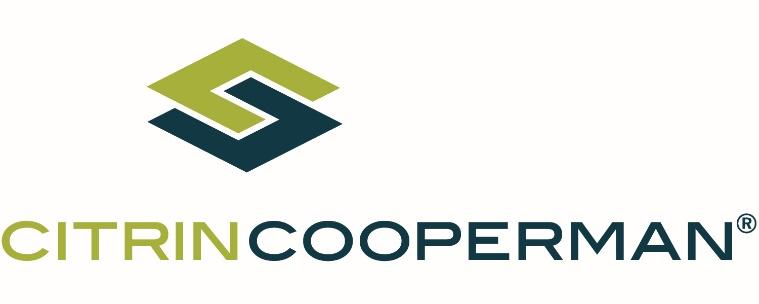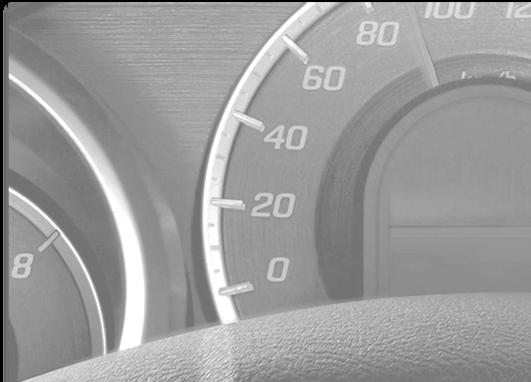YEAR-END
TAX PLANNING
TIPS & PROCEDURES
2021-2022




CITRIN COOPERMAN

AUTOMOTIVE DEALERSHIPS PRACTICE


TAX PLANNING
TIPS & PROCEDURES
2021-2022




CITRIN COOPERMAN

AUTOMOTIVE DEALERSHIPS PRACTICE


It’s not easy operating a dealership — long hours, tough decisions, and increasing complex challenges. The last thing you want to worry about is your year-end financials. We understand your priorities.
We welcome the opportunity to help you with your year-end planning.


We can help you with your tax planning and reporting obligations, so you can Focus on What Counts.
We welcome the opportunity to discuss your year-end tax compliance needs.

The value of personal use of company vehicles should be added to the employee’s W-2.
Contributions and loan repayments withheld from employees must be paid into the plan on or shortly after the payroll issued date.
W-4s: Have employees update form W-4s for the new tax year.
FORM I-9: All employees must complete Form I-9 for employee status verification purposes.

Include the reportable amount of sick pay paid to the employees by the insurance company on the employee’s Form W-2 as well as amount withheld for income taxes.
Premiums paid on behalf of a shareholder who owns more than 2% of the corporation are taxable as wages and are reported on Form W-2. For limited liability company (LLC) members, the premiums are considered guaranteed payments.
Often times in an LLC, these expenses are left in the employee benefit section of the P&L. These amounts should be considered guaranteed payments, similarly to health insurance premiums above.
Confirm with your health insurance provider that the coverage provided to the employees meets the new requirements under the Affordable Care Act. The service provider should complete Form 1095 – Employer-Provided Health Insurance Offer and Coverage Insurance.
Review out-of-state sales (in dollars) and annual volume of transactions. For example, your parts department sells parts over the Internet or telephone and ships them out-of-state. Your dealership may be required to collect and remit sales tax to those states even though the dealership does not have any physical presence there.
Review for any Use Tax obligations. When conducting out-of-state purchases that collect sales tax at a rate less than the state of domicile, the dealership may be liable to pay the difference in rates to the state where it conducts business.
Other Considerations: Please review that vendors are properly charging sales tax on purchases. For example, some vendors do not include sales tax on machinery when sold to a dealer. However, these purchases are usually subject to sales tax.
Travel expenses are deductible in full. For years, 2021-2022 meals purchased from a restaurant are 100% deductible. Other meal expenses may be limited, including breakroom snacks. Expenses incurred for holiday parties, promotions, and on-site employee meals are not limited. Consider segregating these expenses accordingly into separate accounts: 100% deductible meals, 50% deductible meals, and travel.
Entertainment expenses such as expenses incurred for amusement, recreation, membership dues for a club (i.e. golf) are no longer deductible. These should be posted to separate accounts.
Employee fringe benefits, including transportation, and on-site gym paid by employees, are no longer deductible. These should be posted to separate accounts. Conversely, employees are not required to report these fringe benefit as income.
The deduction of non-floor plan interest could be limited for tax purposes.
Business owners could be eligible for the 20% deduction on the qualified business net income from partnerships or S-corporations originating from dealerships or realty companies.
In certain circumstances, owners of the dealership are personally recognizing income related to the dealership (i.e. reinsurance rebates). The dealership should consider recognizing this income rather than the owner personally, to maximize Section 199A deduction.
Review all payments made to unincorporated entities and certain service providers during the year and determine who was paid $600 or more. Verify that a W-9 is on file for ALL vendors. Consider sending a copy of a blank W-9 to all vendors paid in the last quarter of the year.


Due Dates:
• Form 1099-Misc: Issued to recipient(s) – 01/31/22, Filed with IRS 02/28/22
• Form 1099-NEC : Issued to recipient(s) – 01/31/22, Filed with IRS 01/31/22
Form 1099 must be issued to lawyers regardless of how the lawyer or law firm is an organized corporation, partnership, S-Corp, etc.
Form 8300 must be filed to the IRS by the 15th day after the date the cash transaction occurred. Form 8300 can be filed electronically with the IRS using FinCEN's BSA E-Filing System.
In addition to filing Form 8300, the dealership must provide a written notice by January 31st, on an annual basis, to each person from whom the dealership received over $10,000 in cash payments and a Form 8300 was filed for. This is due to each recipient by February 1, 2022.
Dealerships located in Manhattan, Bronx, Brooklyn, Queens, Staten Island, Rockland, Nassau, Suffolk, Orange, Putnam, Dutchess, and Westchester County may be responsible for Metropolitan Commuter Transportation Mobility Tax (MCTMT), which is based on the covered employees' wages regardless of where they reside.
All New York City employers, with more than 20 employees, must provide pre-tax transit fringe benefits.
Dealerships that pay rent of at least $200,000 and are located in Manhattan (south of the center line of 96th Street) may be required to file & pay commercial rent tax.

Employer’s payroll tax deferral – If the dealership deferred its 6.2% share of the Social Security taxes from March 27 through December 31, 2020, 50% of the deferred taxes are due to the IRS by December 31, 2021. Ensure that the remaining liability is reflected on the trial balance which is due December 31, 2022.
Employers can make the deferral payments through the Electronic Federal Tax Payment System (EFTPS) or by credit/debit card, money order, or a check. These payments must be separate from other tax payments to ensure they applied to the deferred payroll tax balance.
Eligible employers can take advantage of The Employee Retention Credit (ERC) under the CARES Act. ERC is a refundable tax credit that is 70% of up to $10,000 in wages paid per quarter (Q1, Q2 and Q3 2021) by an eligible employer whose business has been financially impacted by COVID-19.
With interest so low, work with your lender and refinance your debt with a fixed (lower) interest rate. If you have other debt (i.e., loans due to reinsurance companies or shareholder), also consider refinancing these debts.
Make sure the quarterly estimates due to federal, state, and local jurisdictions (if applicable) are paid timely.
PPP Loan (1st draw): Forgiveness application should be completed by now. Keep records of the forgiveness from the SBA and the bank. If the forgiveness application process hasn’t been started, begin the forgiveness application process as soon as you can.
PPP Loan (2nd draw): Compile all necessary documents required (i.e., payroll registers, invoices for covered expenses, lease agreement, etc.). Complete the application process as per your bank’s instructions if your covered period is completed.
If you qualify for the ERC, you need to analyze the salaries for the PPP loan forgiveness to maximize the ERC and PPP loan forgiveness.
Both NJ & NY have adopted similar Pass-Through Entity (PTE) tax that enables flow-through businesses, such as S-corporations and Partnerships, to elect to pay and deduct the income taxes on the owners’ share of income at the entity level rather than at the personal income tax level. These changes to the states’ tax laws provide a deduction to net income reducing Federal taxable income.
PTE estimated taxes due dates:
• NY: the website portal to accept the 2021 estimate tax payments will be available around December 15, 2021

• NJ: 4th quarter 2021 estimate payment is due January 15, 2022, but you may want to make the tax payment before December 31, 2021 in order to deduct it from the federal taxable income.


We help you improve cash flow and make knowledgeable investment decisions, so you can Focus on What Counts.
We welcome the opportunity to help with your year-end tax planning.


Prepare all bank reconciliations. Review and investigate old outstanding items for potential yearend adjustments and consider reporting unclaimed property to state agencies.
Review the cash clearing accounts to ascertain that there are no unusual transactions in the account. Make sure that all balances are current and will clear in the subsequent month.
Keep in mind that interest received from investments should be recognized in a separate account from CMA interest.
Review the aging of all receivable schedules, including contracts in transit and employee receivables.
Determine why old outstanding receivables are not being collected. Is it a customer credit issue or is the lack of collection due to poor dealership operations?
Make sure One Pays, or other forms of promissory notes to new and used vehicle customers, are not being abused by the sales department.
Parts and Service Receivables - Revisit customers’ available credit. Consider reducing credit limits.
Manufacturer Receivables (i.e., holdback, incentives, rebates, floor plan assistance, and warranty)Determine why receivables are outstanding beyond normal payment terms. Typically, problems are a result of dealership issues and not the manufacturer (i.e., warranty submission and delivery reporting).
Write off any uncollectible balances, after proper authorization.
Review credit balances on the schedules for proper application of consumer accounts or potential year-end adjustments.


Review the fixed asset depreciation schedule. Consider taking an inventory of the fixed assets, especially computers and specialized tools.
Be familiar with the company’s capitalization policy. The IRS has a De-Minimis safe harbor rule that allows purchases of $2,500 or less to be expensed. If you have an audited financial statement, you are allowed to expense purchases of $5,000 or less. Review all additions for the year and reclassify disbursements that do not conform to the policy. Consider some items as repairs, maintenance, office and shop supplies, etc. All expenses related to the addition of assets should be included with the respective assets (i.e., freight, tax, delivery, and installation).
If eligible, take advantage of the IRS Section 179 deduction that allows for the immediate write-off up to $1,050,000 of qualified assets, placed into service by year-end.
100% bonus depreciation may be available to dealerships for assets placed in service by year-end, including leasehold improvements except for internal structural framework, enlargements to the building, and elevators or escalators.
Have a cost segregation study prepared if the dealership has constructed/acquired a building, or made significant leasehold improvements. Cost segregation studies typically result in greater current depreciation expense.
Review the prepaid schedules and re-calculate the actual pre-payments. Adjust for year-end, if necessary.
Review listing of demos, company vehicles, and service units. Demos and company vehicles (ex: loaners) should be written down monthly. Review the valuation for demos and company vehicles at year-end and adjust the book-value accordingly. Service units, such as parts van and plow truck, are depreciable assets. These should not be written down monthly.
Review all additions to fixed assets and make sure that sales tax is charged on the items purchased. Some vendors will not charge sales tax or will charge a different rate. In this case, the use tax or differences should be included on your next sales and use tax return filing. Remit the use tax then.
Passenger automobiles with unloaded weight of 6,000 lbs. or less and were placed in service during 2021 may be subject to IRS luxury vehicle depreciation limits, while vehicles weighing more than 6,000 lbs. may be exempt from the depreciation limits and may qualify for Section 179 deduction.


We provide new perspectives on the strategies that help improve your bottom line, so you can Focus on What Counts.
We welcome the opportunity to help with your year-end tax planning.

Reconcile all receivables from financial institutions, per general ledger, to the financing source statement.

Any unrecorded adjustments and chargebacks should be done at year-end.
If the dealership has leased rental units, the value of the rental units should be included on the balance sheet, along with the liability (pay-off) amount.
Review the valuation for rental units at year-end and adjust the book value accordingly.
Reconcile the floor plan statement to the general ledger. Investigate any unusual or old reconciling items.

Accrue all floor plan interest and charges related to year-end.
Review statement and match principal balance to the trial balance.
Review the amortization of the loan and reclassify the current and long-term portion of the note. Accrue loan interest expense.
If LIFO (Last In First Out) inventory method is used, make sure that the required 12th period LIFO adjustment is made. A “What If” analysis is needed in order to estimate the LIFO reserve.
If Lower of Cost or Market (LCM) inventory method is used for new vehicles, consider writing down older model year vehicles.
Identify the floor plan assistance (FPA) for each new vehicle and include it as inventory cost reduction on new vehicle inventory. Note: this adjustment is only allowed if the dealership has adopted the accounting method of capitalizing floor plan assistance, rather than offsetting floor plan assistance against floor plan interest expense.
Take a physical parts inventory. It is preferred to use an outside service to conduct the parts inventory. Ensure that the general ledger is being compared to the parts physical inventory results at the time it is being conducted. If no physical parts inventory is performed at year-end, reconcile parts inventory to the pad and general ledger.
Have parts manager perform the following:
o Review the parts inventory for any slow-moving or damaged inventory.

o Return parts to the manufacturer. Make sure the parts manager is aware of the manufacturer’s parts return policy. The parts manager should be taking advantage of parts returns throughout the year.
o Identify any obsolete inventory that is not allowed to be returned and needs to be written off, after proper authorization.
Used vehicles - If LCM inventory method is used, write down used vehicles to valuations listed in official used car guides (Galves, NADA) as the average wholesale price for a comparable vehicle. Each used car vehicle must be written down individually. If the vehicles are packed, the cost of the vehicle, for the purpose of calculating used vehicle write down, is the amount in inventory less pack amount. You cannot write down used vehicles by using an overall reserve method (i.e., fixed percentage).
If inventory values include “hard” pack, the balance of pack accounts should be reviewed and adjusted to account for the actual number of vehicles in inventory at year-end.

Review the open repair order (RO) report and reconcile WIP (including WIP accrual) to the general ledger (GL). Make sure that differences between WIP and GL are analyzed.
Prepare the annual IRS Section 263A inventory adjustment.
Accrue all year-end expenses. Any accrued expenses must be paid within 2 ½ months after year end.
• Year-end bonuses (Note: year end salary accruals to owners of a dealership are not deductible for tax purposes.)
• Normal Salaries and Pay Plans
• Employee benefits (medical, 401K, etc.)
• Advertising
• Rent (Note: rents paid to related cash basis parties must be paid by year-end in order for the dealership to deduct the expense during the year.)
• Utilities
• Manufacturer Audit Chargebacks
• Litigation settlements that have not been paid
Keep accounts payable open as long as possible to capture all expenses.
Reconcile the manufacturer open parts statement to the general ledger. Investigate any unusual or old reconciling items.
Intercompany: If applicable, reconcile balances due to and from intercompany or related companies. If possible, settle/pay intercompany balances.
Reconcile all payments made to the reinsurance company to the documents provided by the administrator. Make sure all payments and deals are recorded by the administrator.
Have all payments made to the reinsurance company by year-end. Accrue the December transactions at year-end.
Obtain the IRS warranty adjustment (SWIM) from the reinsurance administrator.
Determine the interest on loans with the owners of the dealership, or any other related entity. Make sure the calculated interest is received or paid by year-end.
If the dealership operates as an S-corporation, ascertain that all shareholder distributions were made in proportion to their ownership interest. If not, make a distribution to match, based on year-end percentage.
If the dealership operates as a Limited Liability Company (LLC), it is recommended that member distributions and contributions are made in proportion to each member’s ownership interest.
Review shareholder or member basis to determine if there is sufficient tax basis for the shareholder to take tax losses on their individual return.
Create and maintain a schedule of taxes paid on behalf of the owner. Include tax type paid, payee, date, and amount paid.
Corporate Taxes – maintain a schedule of when the estimated Federal, State, PTE and City corporate income/franchise taxes were paid. Include payee, amount, and payment date.
Non-Floor Plan Interest – make sure interest not related to floor plan is segregated from floor plan interest.













